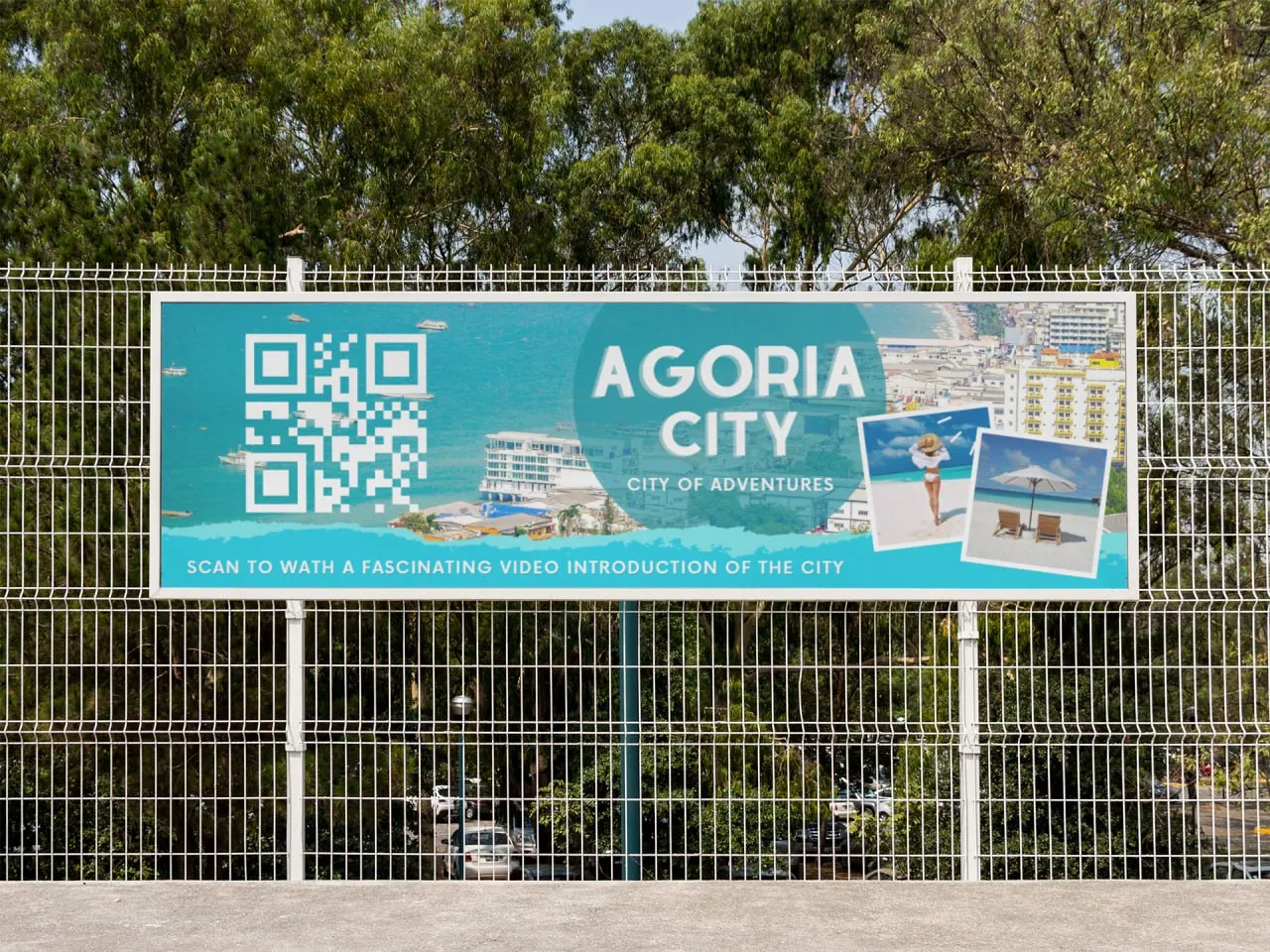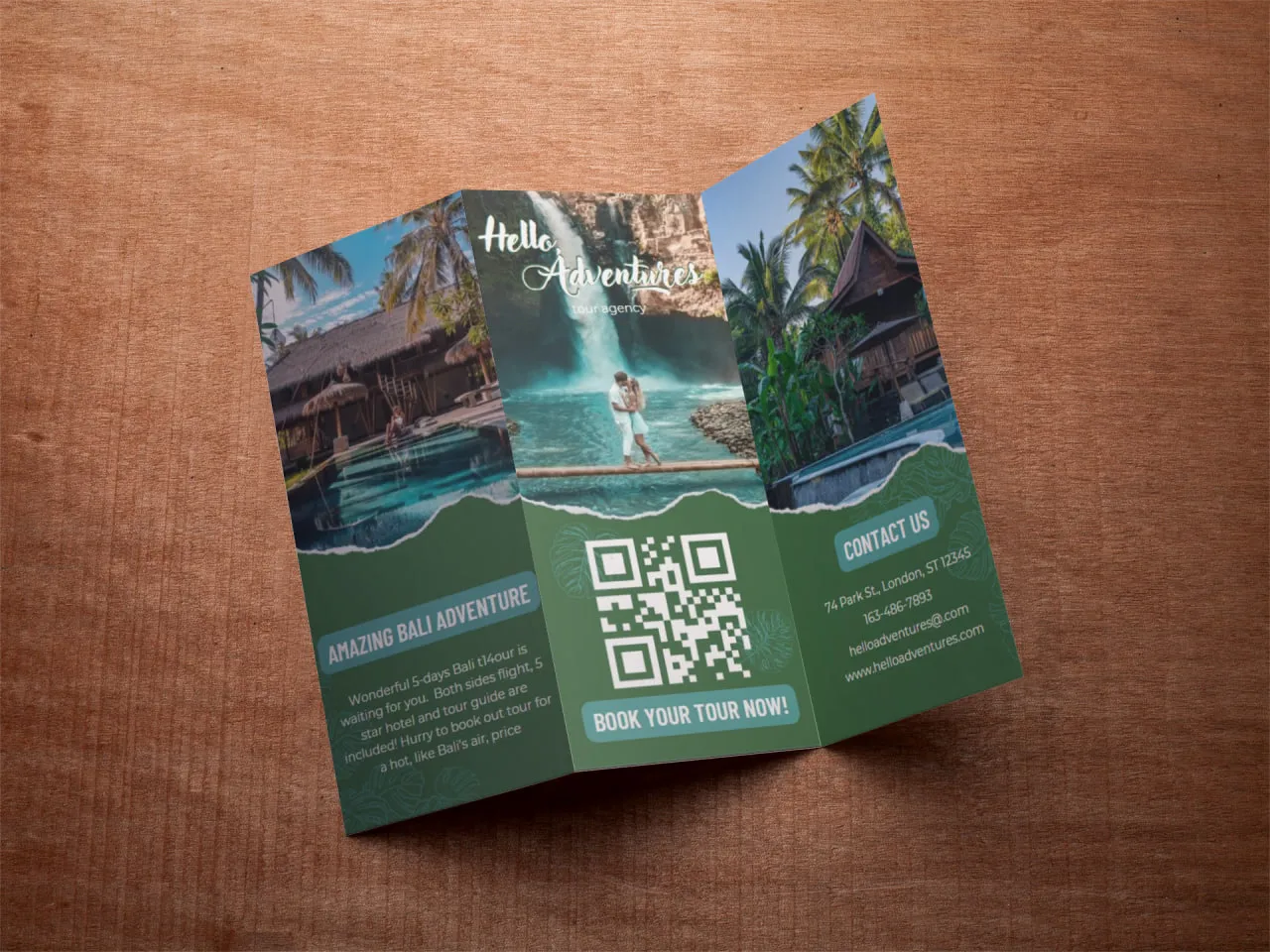

Table of Contents
1.
The Role of QR Codes in Modern Tourism
2.
Practical Applications
3.
Benefits of QR Codes for Tourism
4.
How to create your own Tourism QR codes?
5.
Conclusion
QR Codes for Tourism
In the ever-evolving landscape of tourism, technology continues to play a pivotal role in shaping the way travelers explore new destinations. One such technological marvel that has gained significant prominence in recent years is the QR code. These square, pixelated patterns have found their way into every aspect of our lives, and tourism is no exception. In this article, we'll delve into the world of QR codes and their profound impact on the tourism industry.
The Role of QR Codes in Modern Tourism
QR codes have emerged as a game-changer for the tourism industry, offering a myriad of benefits for both travelers and tourism providers. Here's how they are revolutionizing the way we explore new destinations:
Convenience for Tourists
Gone are the days of lugging around paper maps, brochures, and guidebooks. QR codes provide tourists with instant access to a wealth of information right at their fingertips. Whether it's details about local attractions, restaurant menus, or historical facts, QR codes make it easy for travelers to retrieve the information they need in a matter of seconds.
Contactless Information Access
In a post-pandemic world, contactless experiences have become the norm. QR codes enable travelers to access information without physically touching surfaces or interacting with staff. This touch-free approach has not only enhanced safety but also provided a sense of reassurance to tourists.
Environmental Sustainability
QR codes are a sustainable alternative to traditional printed materials. By reducing the need for paper maps and brochures, they contribute to a greener and more eco-friendly travel experience. Travelers can access everything they need digitally while reducing their environmental footprint.Practical Applications
The versatility of QR codes extends to a wide range of practical applications in the tourism sector:
QR Codes for Attraction and Tour Information
Museums, historical sites, and tourist attractions often use QR codes to provide visitors with detailed information about their exhibits and points of interest. Travelers can scan the code at their own pace, enhancing their overall experience.
Contactless Ticketing and Reservations
QR codes have streamlined ticketing and reservation processes. From boarding passes to hotel check-ins, tourists can complete these tasks conveniently using their smartphones, eliminating the need for physical tickets or paperwork.
Interactive Maps and Navigation
QR codes embedded in maps can help tourists navigate unfamiliar cities effortlessly. Scanning a QR code on a map can instantly provide directions, points of interest, and even augmented reality experiences to enhance exploration.
Multilingual Support
For international tourists, language barriers can be a challenge. QR codes can bridge this gap by offering translations, audio guides, and language-specific information, ensuring that all travelers can enjoy a seamless experience.Benefits of QR Codes for Tourism
Convenience for Tourists
QR codes provide tourists with easy and quick access to information about local attractions, restaurants, and services. Travelers can simply scan a QR code to obtain the information they need, reducing the need for printed materials and making their experience more convenient.
Contactless Information AccessIn an era where health and safety are a top priority, QR codes enable contactless interactions. Tourists can access information, make reservations, and purchase tickets without physically touching surfaces or interacting closely with staff, reducing the risk of disease transmission.
Reduced Environmental ImpactThe use of QR codes in tourism significantly reduces the reliance on printed materials such as brochures, maps, and guides. This shift towards digital information is more environmentally friendly, as it helps to reduce paper waste and promote sustainability in the tourism industry.
Cost Savings for Tourism ProvidersImplementing QR code solutions can be cost-effective for tourism providers. They can update information digitally, eliminating the expenses associated with printing and distributing physical materials like maps and pamphlets.
Enhanced Visitor EngagementQR codes can provide an interactive and engaging experience for tourists. They can access multimedia content, augmented reality experiences, and detailed information about attractions, enriching their overall experience and increasing their engagement with the destination.
Efficient Ticketing and ReservationsQR codes are commonly used for ticketing and reservations. Tourists can purchase tickets, book accommodations, and make reservations for tours or activities with a simple scan. This streamlines the booking process, reducing wait times and enhancing the efficiency of tourism services.
Multilingual SupportQR codes can offer multilingual support, helping international tourists overcome language barriers. By scanning a QR code, travelers can access translated content, audio guides, and language-specific information, ensuring that all visitors can enjoy a seamless experience.
Real-Time UpdatesTourism providers can easily update information linked to QR codes in real-time. This means that tourists always have access to the most current information, including opening hours, availability, and event schedules, ensuring a smooth and up-to-date experience.
Data Collection and AnalyticsQR codes allow tourism providers to gather valuable data on visitor preferences and behaviors. This data can be used to improve services, tailor marketing efforts, and enhance the overall tourist experience.
Enhanced SecurityQR codes can incorporate security features such as encryption, digital signatures, and authentication, ensuring the integrity and authenticity of the information they provide. This can be crucial for ensuring the safety and trustworthiness of tourism-related transactions.
Promotion and MarketingQR codes can be used for marketing purposes, such as offering discounts, promotions, or exclusive offers to tourists who scan them. This can incentivize travelers to explore more and engage with local businesses.
AccessibilityQR codes are accessible to a wide range of users as they can be scanned using smartphones, which are widely available and easy to use. This accessibility ensures that a broad spectrum of tourists can benefit from QR code-based services.
Overall, QR codes have become an invaluable tool in the tourism industry, offering numerous benefits for both tourists and tourism providers. They enhance the tourist experience, promote sustainability, and streamline various aspects of travel, making them a powerful asset for the modern tourism landscape.
L2QR
The QR code platform offers effective e-marketing solutions
Create your QR code design that will meet your brand standards with colors

How to create your own Tourism QR codes?
Embarking on the journey of crafting your own art QR code is an exciting endeavor that doesn't require advanced design skills or a hefty budget. With a few simple steps, you can infuse your creative vision into a QR code that aligns perfectly with your brand. Here's how:1. Sign up on Link-to-QR.com
Go to link-to-qr.com. Our platform offers an intuitive and user-friendly interface for generating QR codes with a personalized touch for free.
2.Select QR Code TypeDepending on your specific tourism needs, choose the appropriate QR code type. Common options include:
- URL QR Code: This directs users to a specific web page, which can be your website, a tour booking page, or any online resource.
- Text QR Code: Useful for sharing textual information such as directions, contact details, or special offers.
- PDF QR Code: Ideal for providing access to brochures, menus, itineraries, or other downloadable documents.
3.Enter the Relevant Information
Input the necessary details, such as the website URL, text, or upload the PDF document you want the QR code to link to.
4.Customize the QR CodeMany QR code generators allow customization. You can adjust the QR code's colors, add your logo, and even incorporate your brand's visual elements. However, be mindful not to overcomplicate the design, as the QR code must remain scannable and clear.

5.Generate and Download
Click the "Generate" or "Create QR Code" button. The generator will create your customized QR code. You can typically download it in a common image format like PNG or SVG.
6.Test the QR CodeBefore using the QR code for any official purposes, test it to ensure it correctly links to your PDF document. Use a QR code scanning app or your smartphone's camera to scan the code and verify that it opens the PDF file.
7.DistributionDepending on your tourism business, you can distribute the QR code in various ways:
- For physical locations like hotels or restaurants, print the QR code on brochures, menus, posters, or informational materials.
- For digital distribution, share the QR code on your website, via email newsletters, or on your social media platforms.
- Monitor and Update: Keep track of the QR code's usage and performance. If you need to update the linked content, you can do so without changing the QR code itself, ensuring a seamless experience for your tourists.
Conclusion
QR codes have undoubtedly become an indispensable tool in the tourism industry. They offer convenience, safety, and sustainability, making them a win-win for both tourists and tourism providers. As technology continues to advance, we can expect QR codes to play an increasingly significant role in enhancing the way we explore and experience new destinations. So, the next time you embark on a journey, keep your smartphone handy – a world of adventure awaits behind those little black and white squares.